Don't confuse power supply output capacitor with decoupling. Although both are on same nets in your schematic design, they are there for different reasons, so they are placed differently and their value is different.
PS output capacitors are there so the power supply can have sane bandwidth, and it will not have to react to fast changes of either input voltage or output current. This is why the capacity here is defined (mostly) by the power supply control performance and the load.
Decoupling capacitors are placed right near your silicon IC. If an IC requires a pulse of current (for example, 30% of flip flops are triggered on clock), this pulse will come from the capacitor, preventing high AC currents in plane or traces of the PCB. Usually those capacitors are relatively small (0.1uF is most used, but not only). They are small so they also have low ESL/ESR, otherwise there would be no effect.
Another case to think about- analog amplifier receives something on input that causes high output current. If you forget the decoupling capacitor, due to PCB trace inductance the voltage will dip, so suddenly the amplifier will not do what it has to.
So those decoupling caps are usually put on each VCC pin of an IC.
Additionally they usually put another big capacitor (maybe 10uF) in parallel with the small ones, so it stores enough energy for longer current pulses.
